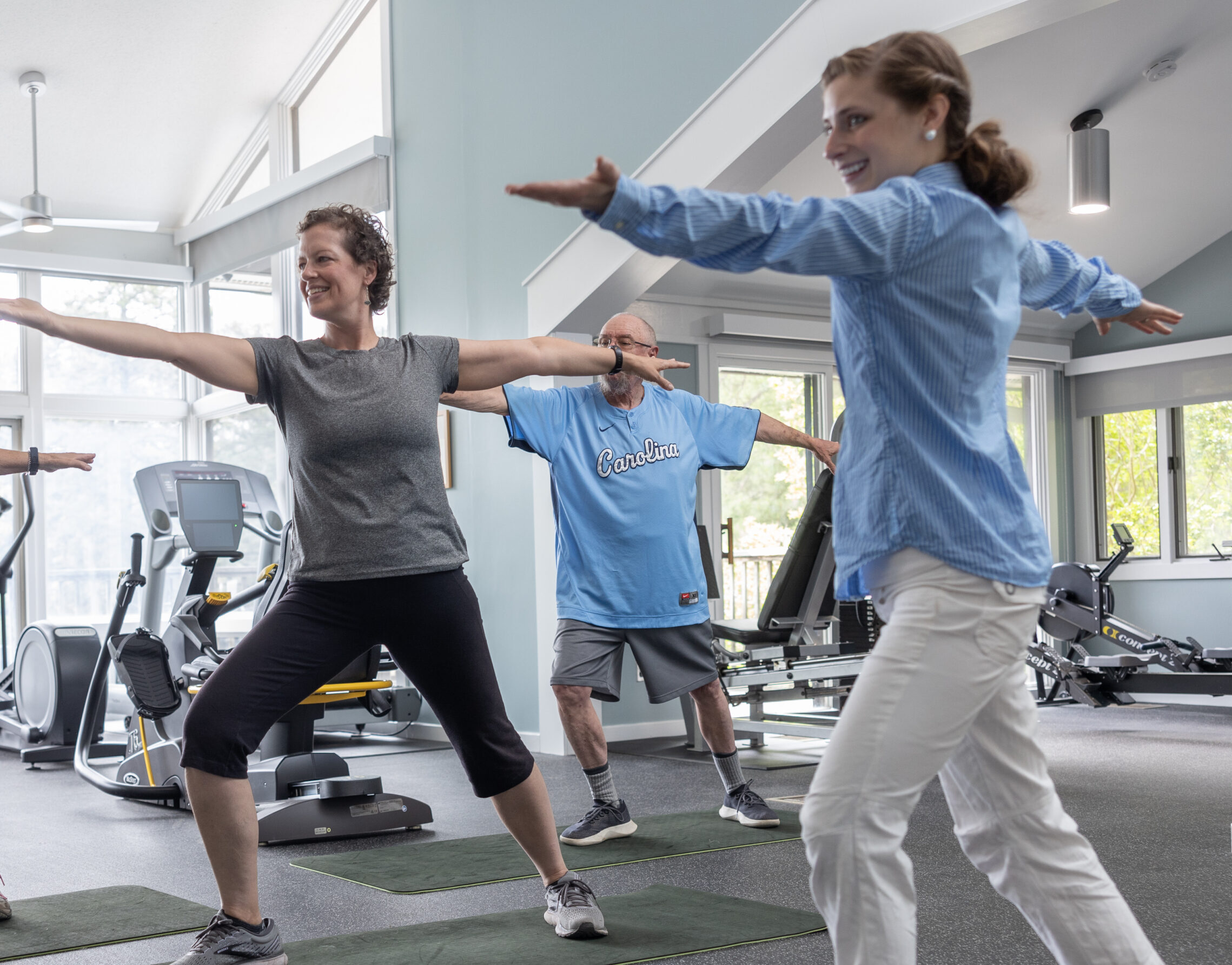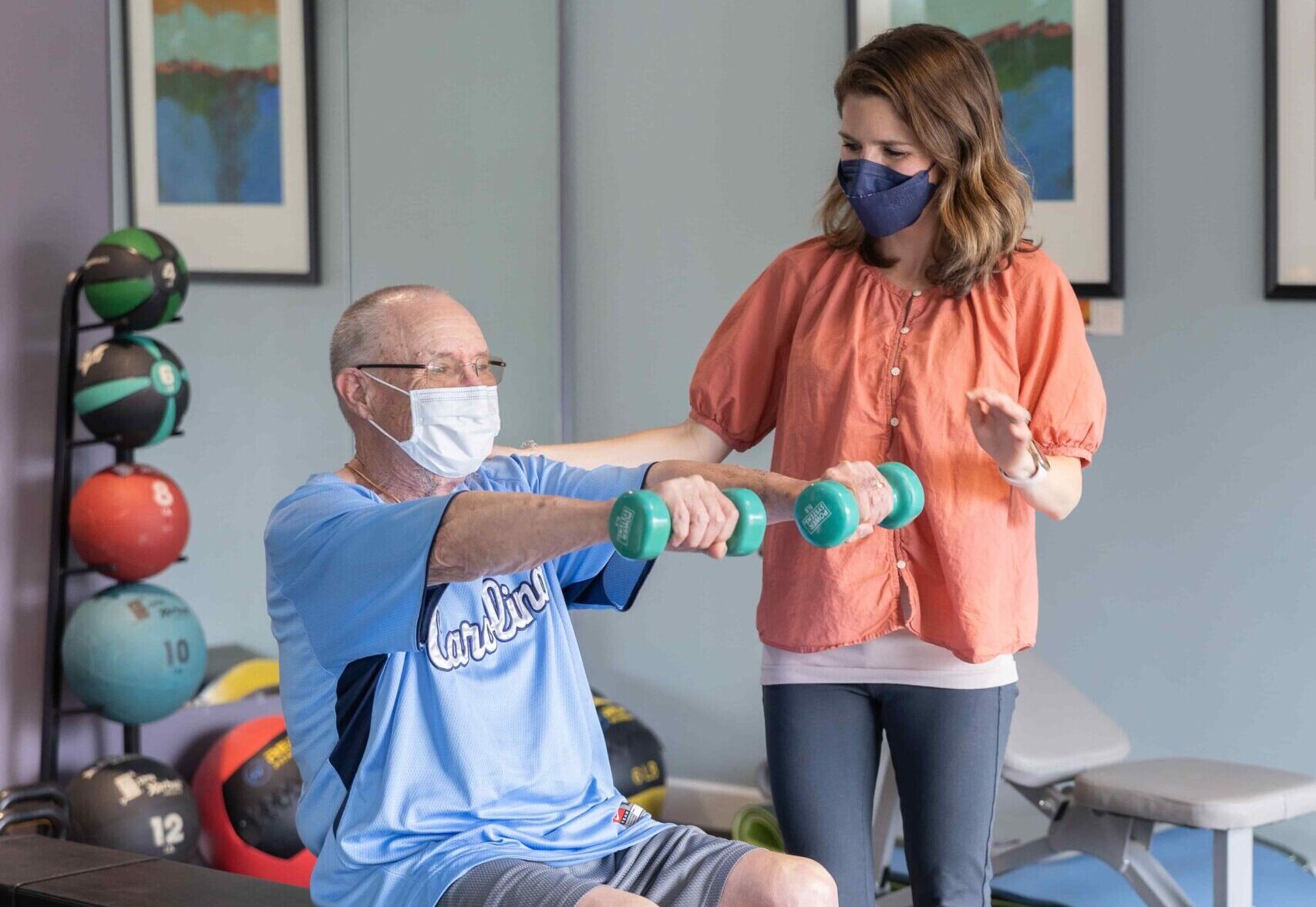Physical Health & Well Being
Why Physical Activity Is Important
For people affected by cancer, exercise can provide many benefits, including helping control fatigue, managing stress, improving endurance, strength, flexibility, mental health, sleep, and improved overall quality of life. Staying active is a great way to protect your body against a variety of illnesses such as diabetes, heart and vascular disease. Physical activity can boost your immunity and decrease you risk of death from any reason by 15%.

Extended periods of inactivity – sitting at a computer, watching tv, etc. – may increase cancer risk. However, moderate to vigorous activity lowers the risk of many diseases, including cancer. Physical activity can also lower the risk of cancer coming back after treatment and can improve overall survival among multiple cancer survivor groups, including breast, colon, prostate, and ovarian cancer. Data is still emerging in this field, but we do know that exercise is safe and beneficial for most people who have or have had cancer.
Before starting any exercise program, you should always check with your medical team. The American College of Sports Medicine recommends 150 minutes of moderate aerobic exercise or 75 minutes of vigorous exercise per week, and that people affected by cancer avoid inactivity. Exercise that is moderate means that you are a little out of breath but can still carry a conversation. The total amount of time can be “accumulated” throughout the week in shorter bouts. For example, you might walk 10 minutes after breakfast, lunch and dinner, and that would count as 30 minutes for the day. Remember, avoiding inactivity is key, and doing something is always better than doing nothing.
Things To Keep In Mind Before Starting and Throughout Your Fitness Journey
Exercise in a way that is enjoyable for you. The more fun it is, the more likely you are to stay consistent. When starting an exercise regimen, start slowly. You might find that exercise feels different during or after cancer treatment. Know your limitations and be patient with your progress. Starting slow can help avoid injury will be more sustainable and will produce long lasting results.
Getting Started
 Remember to think about your health as holistic pieces of a puzzle. Every body system works together. So, to maximize exercise benefits, and to see your health as holistic, in addition to exercising, it is also important to drink water, eat a wide variety of foods, manage stress, and get adequate sleep.
Remember to think about your health as holistic pieces of a puzzle. Every body system works together. So, to maximize exercise benefits, and to see your health as holistic, in addition to exercising, it is also important to drink water, eat a wide variety of foods, manage stress, and get adequate sleep.
Some ideas for ways to start or end your day with a walk, incorporate move breaks during periods of sitting, ride a bike, walk or dance around your house, find a friend to exercise with, join a group exercise program, or try something totally new. Wherever you start, give yourself rest days and listen to your body (if you’re feeling tired, take a break!).
UNC Resources
The Health Coaching and Physical Activity programs within the Comprehensive Cancer Support Program (CCSP) are designed to improve how cancer patients and survivors feel and function. They offer many ways for patients and survivors to include physical activity in their daily life. These include but are not limited to:
- Get REAL & HEEL is a free 12-week small group exercise program for cancer survivors of all types that includes cardio, strength, flexibility, and balance training.
- Healthscore a 6 month one-on-one virtual health coaching research study for English and Spanish speaking patients with advanced or metastatic disease offered by CCSP, which provides weekly health coaching and symptom support.
- Healing Yoga, a slow-paced, deeply relaxing class for people touched by cancer. The yoga program is appropriate for any level of yogi. Join online or in-person for a gentle, restorative practice led by a yoga therapist.
For more information, contact Carly Bailey at (919) 445-4255 or email carly_bailey@med.unc.edu.
National Resources
- LIVESTRONG at the YMCA is a free 12-week program for adult cancer survivors. Survivors participate in a health and fitness program with nine other survivors in a small group setting. Please contact your local YMCA for more information.
- Cancer Support Community
- American Cancer Society
- Maple Tree Cancer Alliance®
